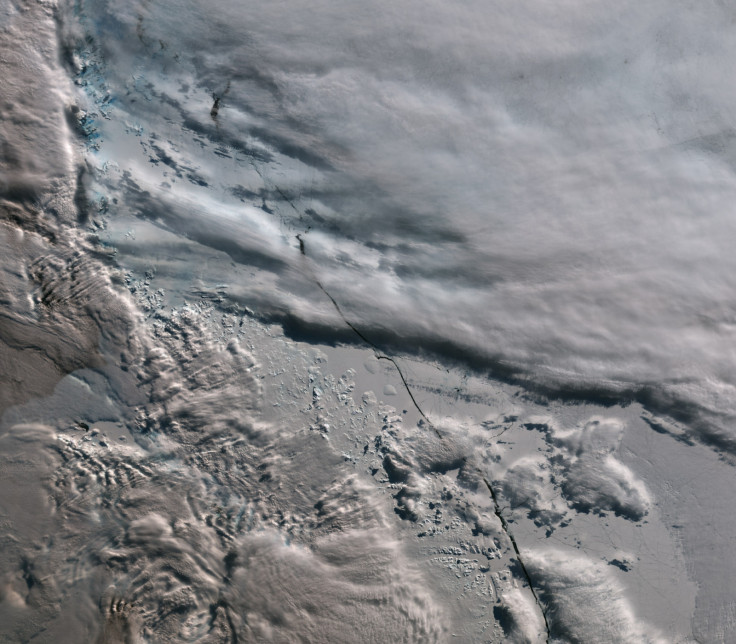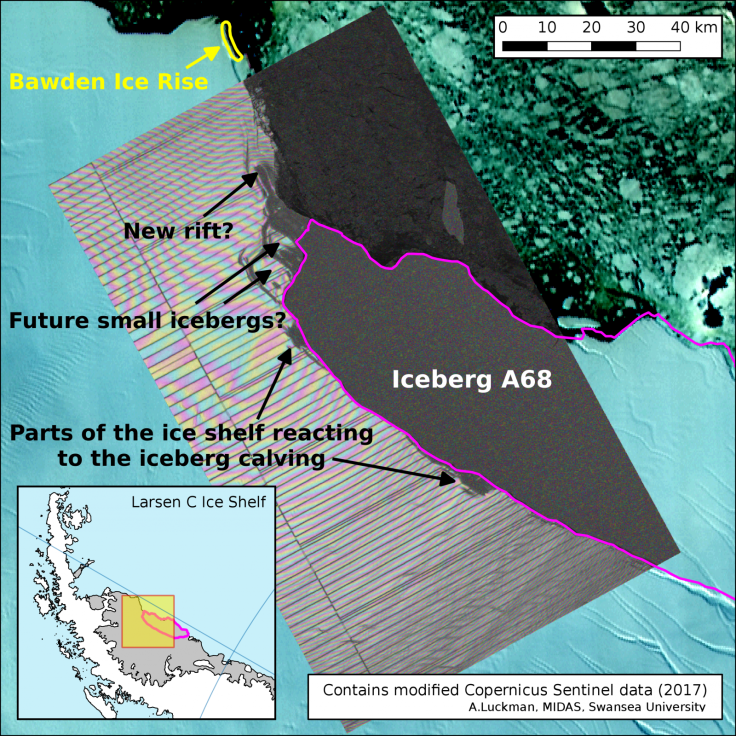New rift found in Antarctic ice shelf just weeks after 1 trillion tonne iceberg broke free
Scientists said that the new rift may cause more 'ice shelf area loss.'
Just weeks after a massive 1 trillion tonne iceberg broke free from Antarctica, scientists have found a brand new crack in the Antarctic ice shelf. Researchers monitoring the Larsen C ice shelf and its response to the dramatic birth of the new iceberg suggest that the new rift may cause further loss of ice from the Antarctic region.
"A new rift appears to be extending northwards (towards the top left) and may result in further ice shelf area loss," researchers at Project Midas, which is monitoring the changes of Larsen C and A68 said.
Meanwhile, satellite images tracking the super iceberg, dubbed A68, reportedly reveal that it is already shifting shape and has moved around 1.5 miles away from the ice shelf that it was attached to just a few weeks ago.
On Tuesday (18 July), the European Space Agency (ESA) took to Twitter to announce that the A68 is no longer one massive iceberg. Instead, it broke up into 3 large and other smaller icebergs, even as it moved away from the Larsen C ice shelf. Although, ESA scientists say it's "hard to predict" where the now broken up 'bergs will go, they speculated that the smaller 'bergs could "drift north into warmer waters."
One massive berg no longer, as #A68 breaks up into 3 large & several smaller bergs, while distancing further from the #LarsenC ice shelf. pic.twitter.com/59VQziDms4
— ESA EarthObservation (@ESA_EO) July 18, 2017
Scientific American reported that Project Midas researchers also noted several follow-up potential icebergs that are currently clinging to the remaining Larsen C ice shelf, which itself is now at its smallest size ever recorded in history.
Where the bergs go next is hard to predict, but now that they have broken up into smaller pieces, they could drift north into warmer waters. https://t.co/HqsZlJjzrc
— ESA EarthObservation (@ESA_EO) July 19, 2017
Project Midas researchers also said that the new crack may likely travel to the Bawden Ice Rise, an area where the ice encompasses an island. The Bawden ice rise, along with the southern Gipps ice rise, which the A68 berg used to be attached to, are crucial areas that help anchor the entire Antarctic ice shelf.
"Although this new rift will probably soon turn towards the shelf edge, there may be a risk that it will continue on to Bawden Ice Rise, a crucial point of stabilisation for Larsen C Ice Shelf," Project Midas researchers said.

Although some researchers have said that the A68 breaking off from Antarctica was natural and not the result of climate change, the fate of the remaining Larsen C ice shelf hangs in the balance. "Warm water is the main driver (of melt) now. If warmer air is sufficient to melt the surface, then the ice shelf will break up and sea level rise from Antarctica will enormous," University of California ice researcher Eric Rignot told Scientific American.
Project Midas researchers said that they intend to continue monitoring the ongoing impact of the birth of the A68 berg on Larsen C.

© Copyright IBTimes 2025. All rights reserved.






















